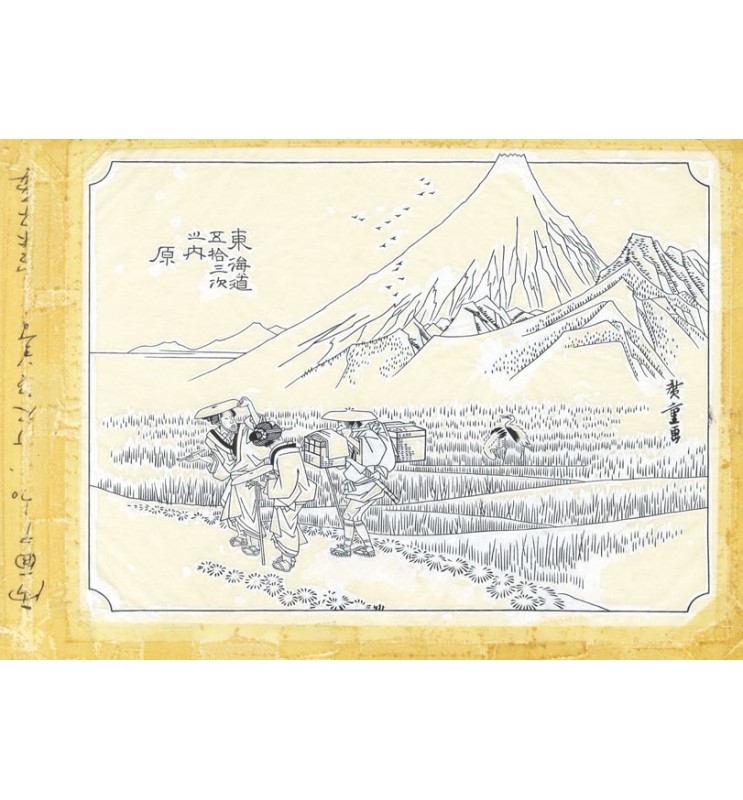14 Hara: Mount Fuji in the Morning
(Hara, asa no Fuji)
原 朝之富士
Hanshita , china ink on paper vers 1960 19 x 14 cm
Abbreviation of hanshita-e 版下絵. The final master drawing or design which was used by an artist or his workshop to carve the main key block *omohan 主版, the block which printed the black compositional outlines of a woodblock print *ukiyo-e 浮世絵. The design was painted in black ink *sumi 墨, on very thin paper, such as *minogami 美濃紙 or, in the Meiji period, *ganpishi 雁皮紙. When pasted face-down on the woodblock (which reverses the design for printing) the black lines of the design were visible through the translucent paper. Many tiny details, such as individual hairs of a wig, etc., were left to the judgement of the master blockcarver, since it was impossible to indicate all of these on the hanshita. Though normally destroyed during the process of carving the key block, in certain cases hanshita do survive. Surviving examples are often decorated with rudimentary coloring to enliven the master drawing when first presented to the publisher during preliminary negotiations and when presented to the censor. All hanshita for commercial ukiyo-e prints after 1791 needed to be stamped with the official seal of approval *kiwame-in 極印 before being sent to carvers. The name given to such coloring, goshuugi 御祝儀, reflects this "presentational" function. Only during the Meiji period did full-color master designs come to be prepared. The hanshita was only a final stage in a series of draft drawings *gakou 画稿 or manuscripts shahon 写本 prepared by the artist and his workshop. By the mid-19c there was a distinct craft of professional copyists who specialized in preparing neat copies of artist's rough drafts .






 2302631406 / 23057740536
2302631406 / 23057740536